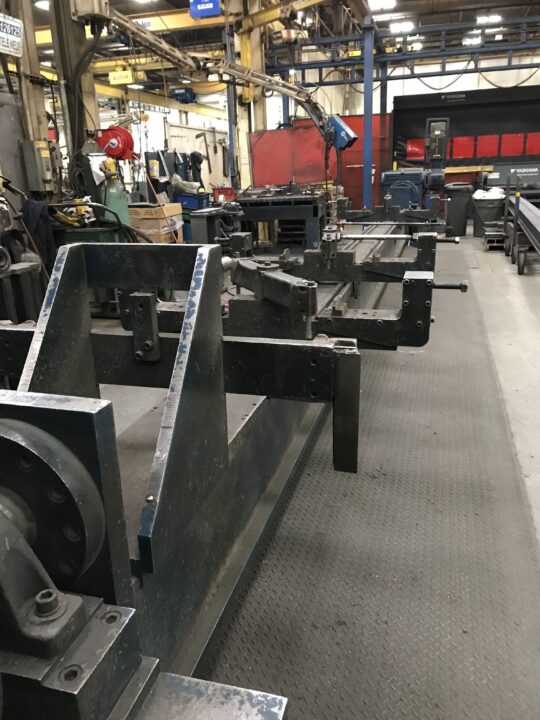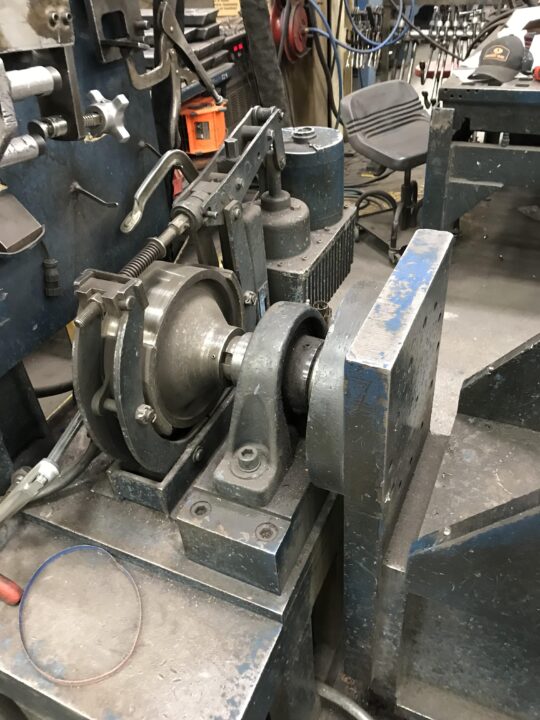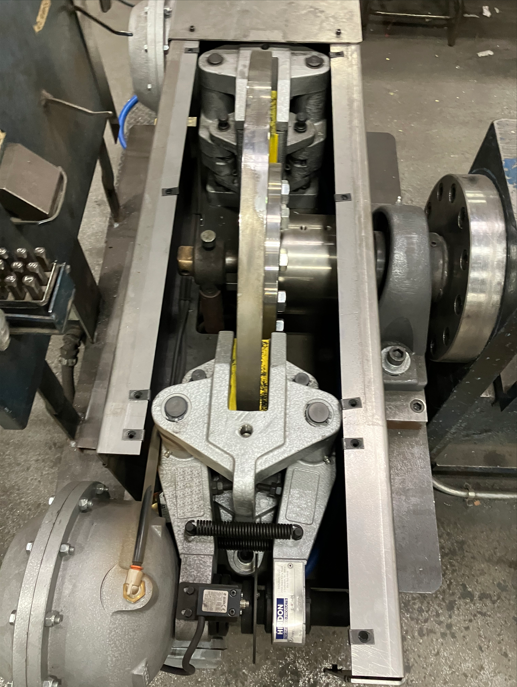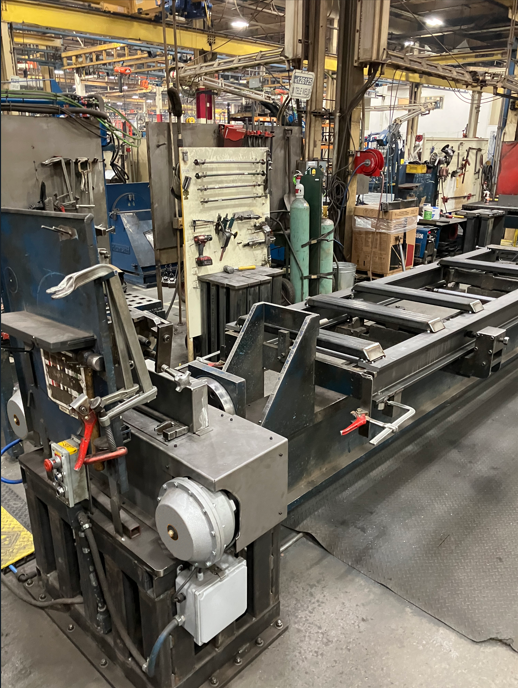Background:
A leading provider of material handling products needed a way to reliably hold the horizontal rotary axis welding fixture used in their manufacturing process. Measuring 5’x5’x30’ and weighing over 10,000 lbs., the large rollover positioner creates an unsafe overhung load when in operation. Having identified this issue as a risk and safety hazard in their manufacturing process, the customer approached Hindon in search of a solution to reliably hold their weld fixture.

The customer’s welding fixture rotator measured 30′ long by 5′ tall/wide and presented a large overhung load during operation.
Upon approaching Hindon to discuss the application, the customer’s weld fixture utilized a fail-safe drum brake that was operating unreliably. After a preliminary review of the application and its technical requirements, Hindon helped confirm that the existing brake was undersized for the application. Knowing the existing brake was not capable of the torque required to keep the rotator from free turning in the event of a failure in the drivetrain, the customer required a retrofit solution that would meet or exceed the torque requirement of the application. In addition to being capable of higher torque output, the ideal industrial braking system would seamlessly work within existing application constraints to provide a robust, easy to install, and cost effective solution.

The existing drum brake on the welding fixture rotator was undersized for the torque requirement.
Solution:
Acknowledging the existing brake was undersized for the application, Hindon supported the customer in establishing the torque requirement for the new braking system based on an analysis of the technical specifications of the weld fixture drivetrain and the worst case scenario load torque based on how the fixture rotates in the horizontal axis during operation.
To determine the worst case scenario torque requirement, Hindon helped determine the system’s center of gravity and mass in both loaded and unloaded conditions as the fixture rotates around its horizontal axis. This analysis informed the nominal torque requirement to which an appropriate safety factor was then applied to determine the overall torque requirement of the new braking system.
After defining the torque requirement for the upgraded braking system, it was clear that a significantly larger and more robust braking system would be needed for the application – simply upgrading the existing drum brake did not provide a path to satisfying the new torque requirement. Because the customer already had shop air in the area of the weld fixture, Hindon determined that a pneumatic disc braking system would be the most cost effective way to achieve the higher torque requirement.

Overhead view of the weld fixture brake after install.
Hindon then developed and supplied an industrial braking system consisting of two spring applied, pneumatically released disc brakes for use on a 630mm diameter brake disc with bolted hub. The installation of this retrofit braking system was designed to be as simple as possible and required minimal modifications to the overall weld fixture or shop environment.

Install image showing the weld fixture brake installed at the opposite end of the motor.
The new two-caliper braking system from Hindon provides the customer improved safety and peace of mind by reliably holding their rotary axis weld fixture during the manufacturing process should the drivetrain fail.